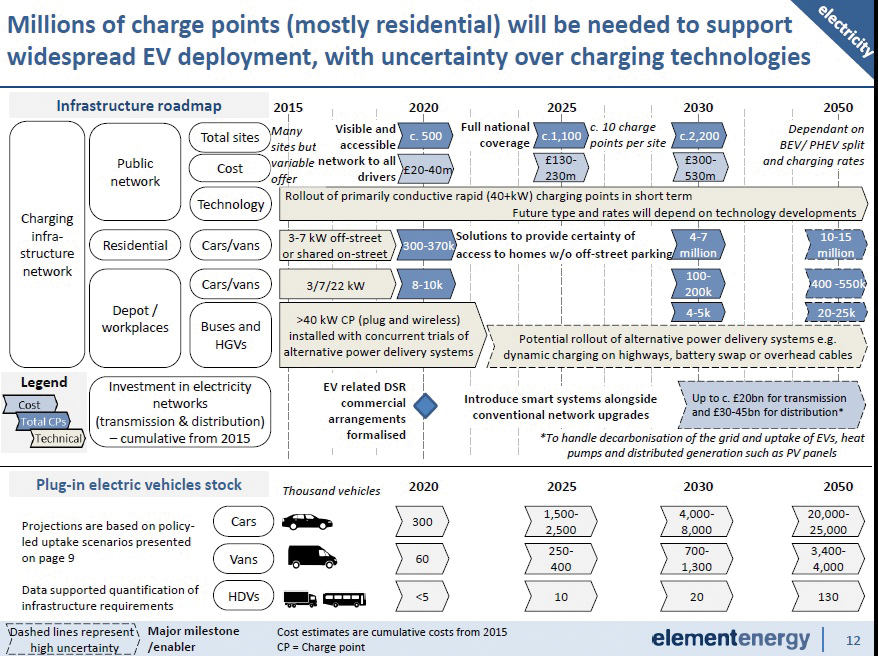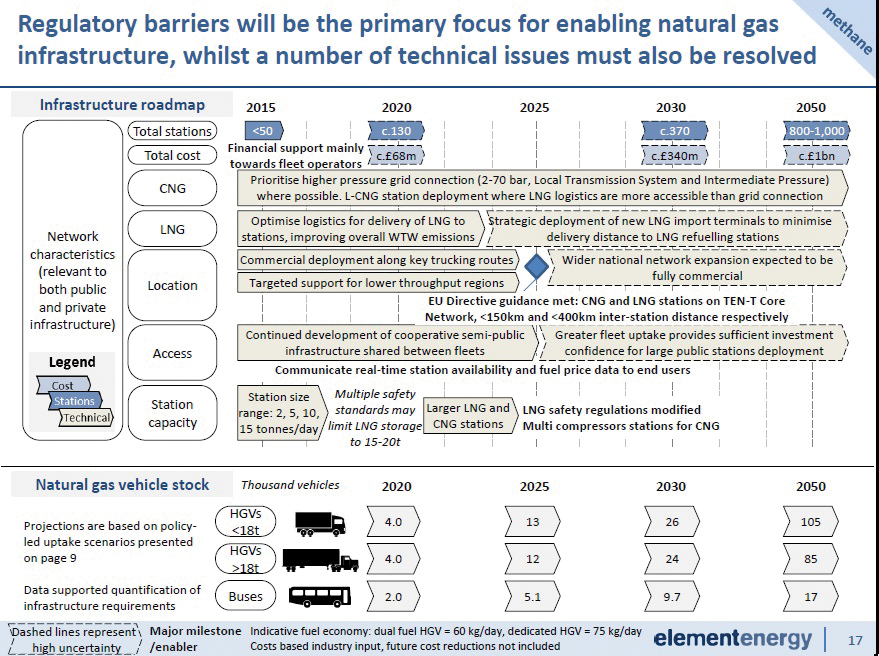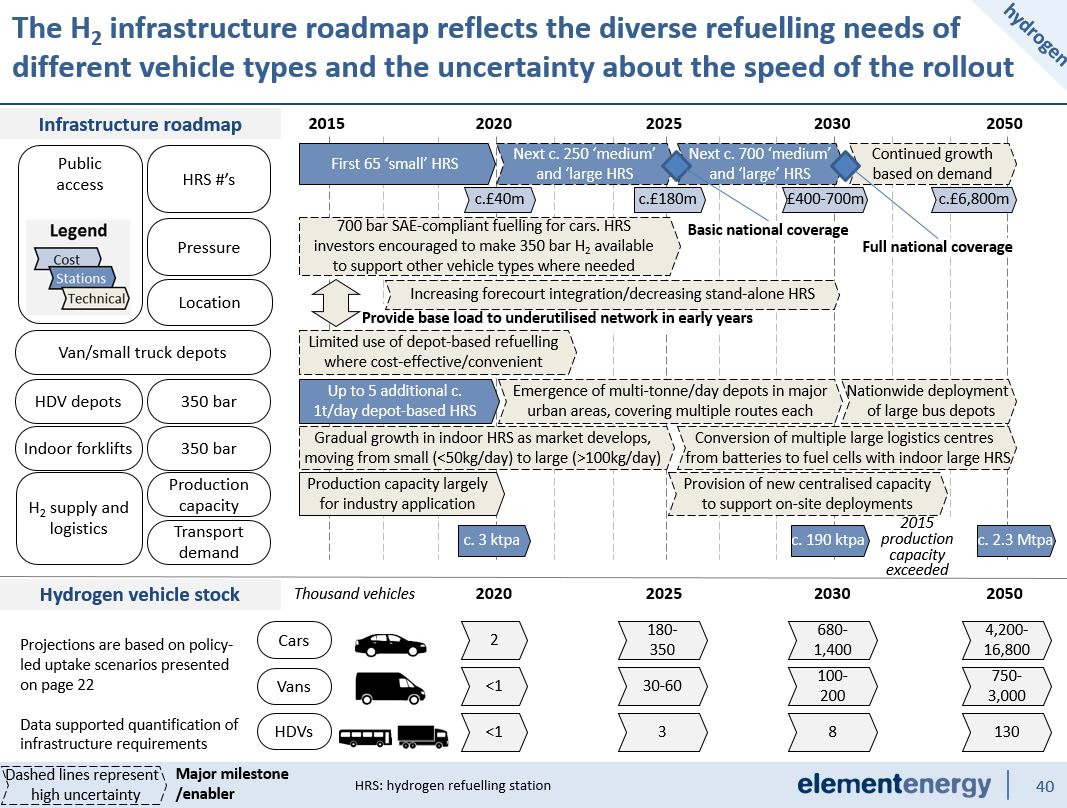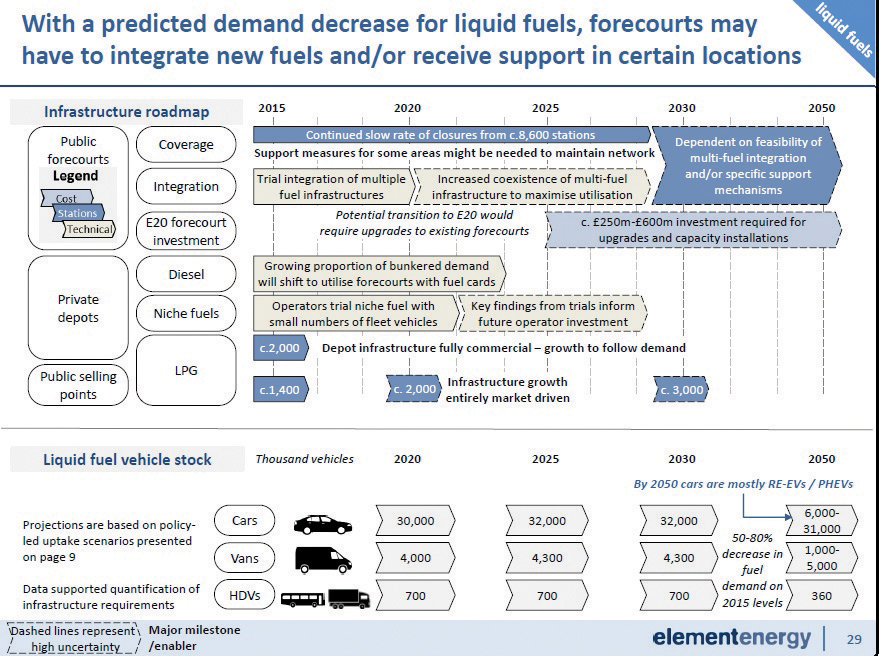Element Energy was commissioned to produce a series of reports to look at how the UK can develop the necessary infrastructure to deliver the low carbon fuels of the future.
These studies are the ‘missing piece’, complementing the vehicle technology and transport energy roadmaps. The Infrastructure Roadmaps consist of a summary report and roadmaps for four different fuel streams: liquid fuels; methane; electricity and hydrogen.
View the Transport Energy Infrastructure Roadmap to 2050 - full report. The key conclusions and recommendations from the reports include:
Electricity
The existing electricity network, utilising smart technologies, is well suited to support the electrification of transport. However, growing electrification of (mainly) cars will present a peak demand but not a generation challenge.
Millions of mainly residential charge points will be needed to support widespread EV deployment and that progress is constrained by uncertainty over future charging technologies. A visible, accessible and reliable public charging network should be rolled out for light vehicles.
View the specific electricity infrastructure roadmap.

Methane and Biomethane
There are opportunities for heavy duty vehicles to use natural gas supported by mature refuelling technologies but that regulatory barriers need to be addressed.
The UK, benefits from an extensive high pressure gas grid but the siting of refuelling stations needs to take account of well-to-tank emissions to deliver on targets to reduce carbon emissions.
View the specific methane infrastructure roadmap.

Hydrogen
The medium- and long-term potential for hydrogen as a vehicle fuel needs to be matched with a growing infrastructure. Initial infrastructure investments will require financial support from government, and local government can also play a key role in providing ‘base load’ by adopting hydrogen and fuel cell vehicles in public fleets. Hydrogen demand from a range of vehicle types, from passenger cars to commercial vehicles and buses, will be needed to sustain the infrastructure during this early phase.
Beyond 2020, decreases in fuel cell vehicle costs and access to low cost, low carbon hydrogen is expected to allow a transition to profitable, private sector investments to build a UK-wide refuelling network and provide the same convenience to customers as petrol and diesel cars today.
View the specific hydrogen infrastructure roadmap.

Liquid Fuels
The drive for more fuel efficient engines and the introduction of other road transport fuels will inevitably reduce demand for traditional liquid fuels.
Post-2030 this will put pressure on the commercial viability of the existing forecourt network, particularly in rural locations. There is potential for LPG and, in the longer term, for liquid air to contribute to decarbonisation and air quality improvement before 2050.
View the specific liquid fuel infrastructure roadmap.
